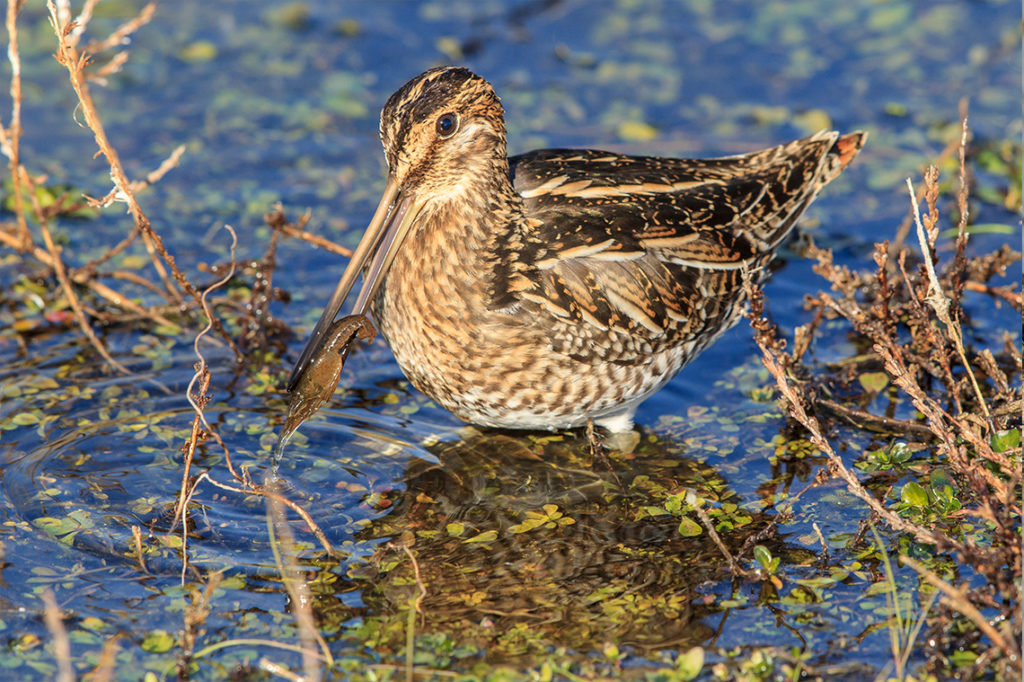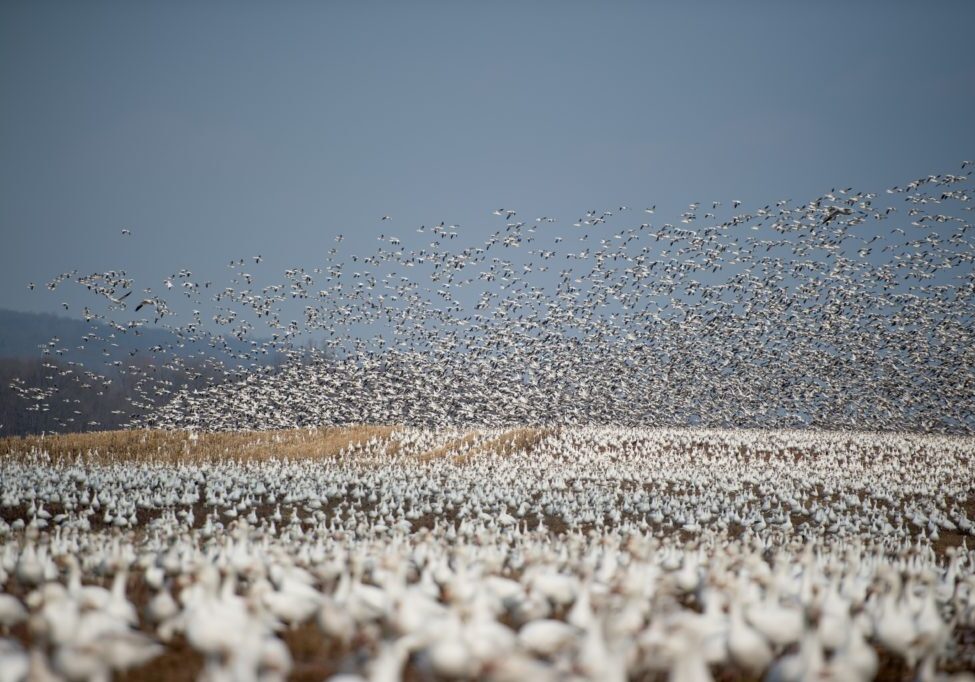BIRDRETURNS ENABLES GROWERS TO HELP BIRDS
The BirdReturns program compensates rice growers who create waterfowl and shorebird habitats by keeping their harvested fields submerged longer than usual.
Rice growers understand that their agricultural fields are ecologically important as habitat for native and migrating wildlife, particularly waterbirds.
But agricultural production cycles don’t necessarily coincide with avian migration and breeding seasons. Supporting the natural rhythms of wildlife requires growers of rice and other crops to make some costly accommodations.
Growers who want to maximize the benefits their fields can provide for waterbirds and shorebirds must postpone draining their fields, and may have to build water control structures that they wouldn’t otherwise install.
Recognizing that those added expenses and scheduling shifts place additional burdens on growers, the California Rice Commission in partnership with The Nature Conservancy created a program called BirdReturns. Initiated in 2013 and funded by private donors and foundations, the BirdReturns program awards stipends to growers to help underwrite added expenses related to adapting their acreage to function as flooded bird ecosystems in this vital part of the Pacific Flyway.

RICE GROWERS HELP COUNTERACT HABITAT LOSS
Wide areas of California’s Central Valley once were natural wetlands, fed for eons by rivers and their tributaries. Since the mid-19th century, however, 95% of that natural riparian habitat area has been converted to agriculture or subsumed by urban and suburban growth.
Growers’ practice of seasonally flooding rice fields to accelerate post-harvest rice straw decomposition creates seasonal flooded habitat, which has begun to counteract the loss of natural wetlands. Conservationists and scientists who monitored the migratory and nesting patterns of shorebirds were able to calculate the timing and duration of shorebird breeding and nesting activities. They used that information to determine the gap between the date when growers normally would drain their fields, and the date until birds needed use of the fields to flourish.

The Nature Conservancy hatched the idea for the BirdReturns program with the support of the California Rice Commission. The concept was to compensate rice growers who agreed to keep their harvested fields submerged in compliance with exacting parameters. The BirdReturns program focuses on shorebirds, which need habitat covered by 2 to 4 inches of water — in contrast to other waterbirds that seek deeper water. Participating growers are required to continually monitor water depth, and to chop and disc their stubble to mix straw with the soil, with minimal clumping or matting. Ideally prepared fields resemble mud flats.
TIMING IS KEY INGREDIENT FOR BIRDRETURNS
The most critically important element is timing of water. As The Nature Conservancy observed, furnishing water in the right place at the right time to help migrating birds is of fundamental importance. To determine the precise timing when fields need to be flooded, The Nature Conservancy consulted with researchers from the Cornell Lab of Ornithology at Cornell University.
The Cornell scientists, in turn, studied thousands of observations that California bird-watching scientists and enthusiasts recorded through Cornell’s eBird platform. The researchers’ analysis of that data helped to determine the Central Valley locations where migrating waterbirds appeared in greatest numbers, the timing of their arrival, and the duration of their stay. Their findings helped identify the areas and timetables for BirdReturns program participants.
Involvement of growers in the BirdReturns program is voluntary, of course. Sufficient numbers of participants in each of the years since the program’s launch in 2013 have made an important contribution to the welfare of migrating waterfowl and shorebirds.
Paul Buttner, the executive director of the California Ricelands Waterbird Foundation, reported that in the autumn of 2018, BirdReturns participants allocated 1,926 acres of temporary Sacramento Valley wetland habitat for waterbirds.
photo credit: Leslie Morris: Dowitchers, Brain Baer: White-faced ibis, American Avocet
Species attracted to these surrogate wetlands include the Long-Billed Dowitcher, Least Sandpiper, Dunlin, Greater Yellowlegs, Curlew, Plover, Black-necked Stilts, White-Faced Ibis, American Avocet, Greater and Lesser Sandhill Cranes, and waterfowl.
The Waterbird Foundation’s funding in 2018 provided 1,496 acres of BirdReturns habitat through contracts with six rice farmers. This acreage created shallow flooded habitat and waterbird-supportive management practices in September and early October, when the majority of rice crop fields are still in production and consequently water is extremely scarce on the landscape. Since 2014, personnel from The Nature Conservancy have tabulated more than 1.8 million birds on the fields of BirdReturns enrollees. That lends tangible testimony to the success of this innovative and important donor-supported program.














